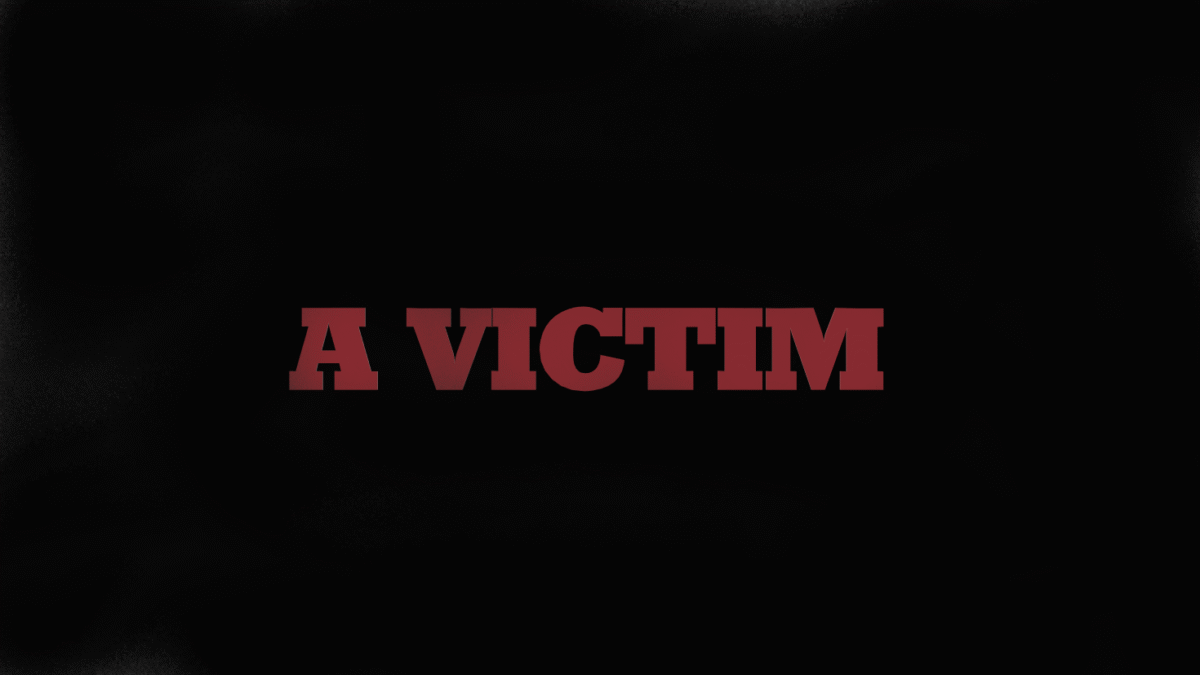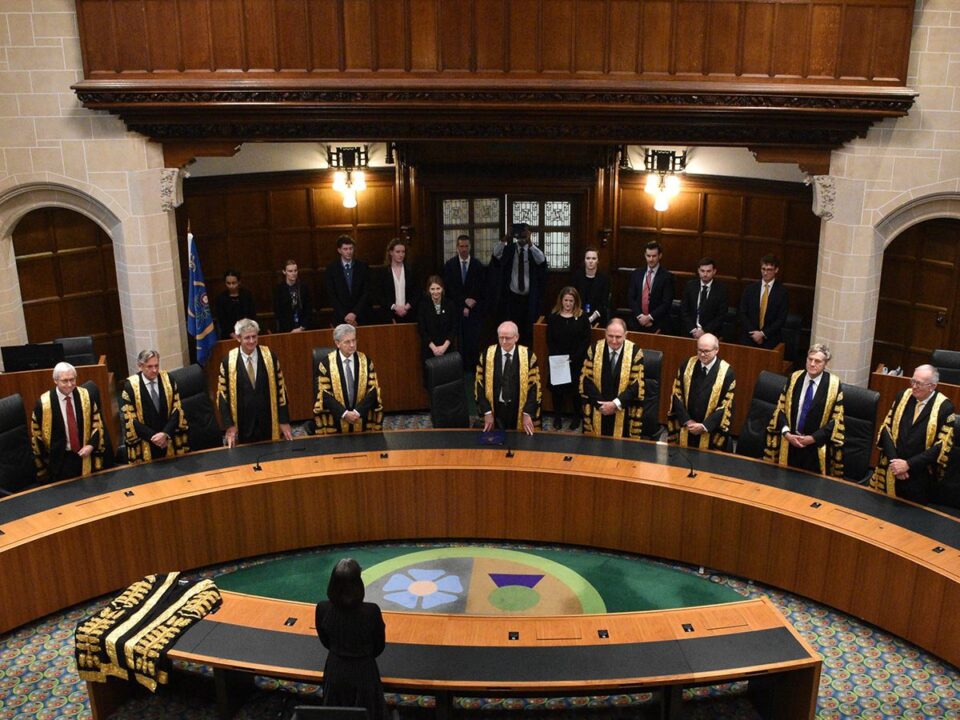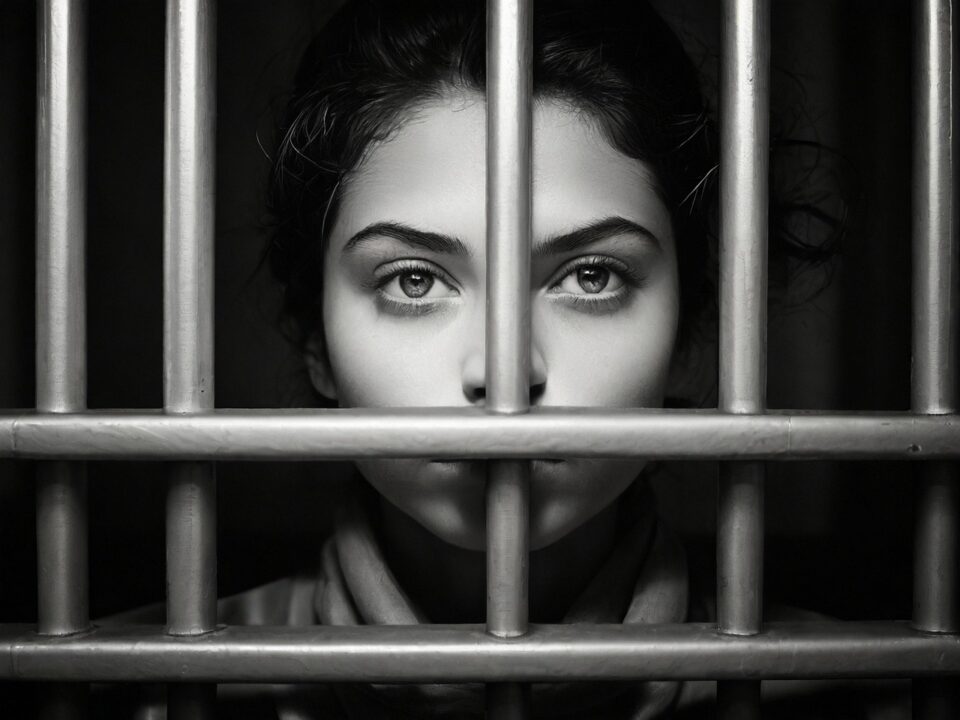Zemiology Harms and Victims
Traditionally, the focus of the academic subject of criminology has been on finding the causes of crime in order to prevent, reduce or punish law-breaking. For example, criminologists from a psychological background have tended to focus on the psychological characteristics of individuals who have committed crimes. In contrast, criminologists from a sociological background have focused more on factors rooted in social life such as those related to economic, gendered, generational and cultural inequalities.
Some sociological approaches have long recognised that crime is not just a question of who breaks the law, but also about who makes the law and how it is enforced. Issues of power and inequality affect what types of actions are seen as illegal and what sort of people are more likely to be seen as offenders. Power can be defined as ‘the ability to influence and control people, ideas and events’ (Drake and Scott, 2019, p. 21).
Power can be used to influence the actions of the criminal justice system and the state, ideas about what is harmful and what constitutes crime. Issues of power are integral to all critical understandings of crime and justice.
For example, many critical criminologists argue that actions by powerful individuals, social groups and organisations are much less likely to be defined as illegal than those committed by the less powerful.
Similarly, the more powerful individuals, groups and organisations are, when they break the law, the less likely they are to be prosecuted and convicted for crimes.
Power differences are one form of inequality, but they in turn are grounded in other forms of inequality. For example, economic inequality gives some social groups and institutions more chance of exercising power than others.
In particular wealthy multinational corporations are powerful actors in their own right and they can also influence the actions of states.
Crime and Harm
Again, there is not a right or wrong answer here, and, indeed, you may have considered that the definition of some activities as ‘crimes’ rather than others might be quite subjective.
For example, you may have considered that whether something is a crime may depend on where it is that the harmful occurrence takes place. For example, in some countries a person crossing the road where the pedestrian light is red may be committing a crime, where in other countries it would not be.
The gender or age of a person being able to drive a car, vote, or engage in certain sexual activities may differ from place to place, so that what is considered a crime in one country is perfectly legal in another. In other cases, the criminality or otherwise may be gendered (for example, when women are prohibited from driving).
You may also have considered that political, historical and cultural factors may shape whether something is considered a crime. For example, laws governing abortion have been shaped by changing social attitudes over time, including political factors such as women’s voting rights (or lack of them) and cultural factors such as religious differences.
On the other hand, some activities, even as extreme as killing another person, may not always be considered a crime. Whether it is considered a crime may depend on who carries out the act and for what reason.
Thus, as you will see later in the course, the killing of a terrorist suspect by a police officer may not be considered a crime, while a person killing somebody in a fist-fight might be prosecuted and potentially convicted of a crime.
Some of the implications you might have considered could be that when certain activities become accepted as ‘criminal’ they become taken for granted as that. They may also be taken for granted as associated with particular groups and that may impact on how society treats those groups.
An example might be the association of terrorism with certain ethnic groups whereas public acts of violence committed by other ethnic groups are less likely to be regarded as terrorist. This in turn can impact on how activities are policed and what is prioritised by the criminal justice system.
Part2
Proponents of the social harm approach argue that crime has no coherent or distinctive characteristic as a category. Illegal acts are sometimes harmful, but not always, and conversely there are many legal acts which are very harmful indeed.
Thus zemiology argues that any activity, process or set of circumstances that is harmful or damaging is a potentially important focus of analysis, whether or not it happens to be against the law (Hillyard and Tombs, 2007).
A transnational or global focus can be found in some criminology, but the social harm approach lends itself particularly well to the study of harmful actions, policies and events which are not confined within individual countries.
For example, harms done to the environment often cross national boundaries, and international or global organisations (for example transnational corporations) are often involved in producing uncriminalised harms.
Furthermore, harms produced by the actions or policies of nation-states frequently affect people and places beyond the boundaries of that state.
By providing an alternative to criminology, advocates of the social harm approach claim that their approach can better investigate issues of injustice and harm, including globally oriented ones, such as threat to the ecological survival of the planet, genocide, war, abuse of human rights, nuclear proliferation and so on.
The examples considered in this course, namely Hurricane Katrina, imprisonment, and the ‘War on Terror will enable you to study these aspects through both criminological and social harm approaches.
This will also show how global activities affect individuals, such as how seemingly ‘local’ places (such as specific prisons) and ‘local’ processes (such as the impacts and outcomes from Hurricane Katrina) may in fact be globally shaped. In doing this, the course will provide you with an example of studying crime, justice and social harm at postgraduate level.
Power and inequality
In the last activity you considered critically the idea that ‘crime’ becomes taken for granted. This may, in turn, may mean that people cooperate in accepting what is and is not defined as a crime, conforming to particular norms and in the process reinforcing expectations about how we can and should behave. For critical criminologists, the focus is often less on measuring crime and its causes, and more on how occurrences and activities acquire the status of ‘crime’.
By implication this means that the reasons that some activities or events are not classed as crime are also the focus of attention of some criminologists. Related to this are questions about who and what become the focus of criminal investigation and activity, and what people and which do not.
These issues are also important in social harm approaches. However, they move beyond criminology in arguing that social harm itself should be the focus of attention rather than simply asking why some activities and events are classified as crimes and others are not. Zemiology raises wider questions beyond the definition of criminality, such as how harm can be measured, why some harmful actions may be seen positively and how a focus on social harm can be used to promote social justice.
This in turn raises questions about who may be seen as responsible for causing harm, and also about situations where there may not appear to be obvious ‘perpetrators’ but the way in which social life is organised still results in social harm.
These issues also raise questions about power and about the role of states and other institutions, including local, national and global corporations, in producing and responding to harms.
For zemiologists, one area of investigation is the power of certain actors to influence how harm is regarded and what responses are taken. Inequalities of power can prevent the recognition of what is harmful, or can restrict attempts to mitigate or tackle the harm caused. This can cause other inequalities, for example by restricting the life chances of people who have been harmed by the operation of the criminal justice system itself
Part2
Central to the social harm approach, then, is the idea that to focus on ‘crime’ is problematic, and potentially misguided. Instead, it is argued that focusing on ‘harm’ would allow us to better understand and respond social problems, and potentially to prevent harms from occurring.
As you continue with this course you will be learning about zemiology, the social harm approach, through two particular lenses:
- the role of ‘the global’ in locally occurring harms, including consideration of the role of corporations and states (often referred to as ‘crimes of the powerful’)
- the role of inequalities and power.
To do this you will look at examples occurring in different places and considered global in nature. Some of the examples will concern harms impacting across borders, while other kinds of harms may be seen as producing gains for some parts of society, particularly in states or regions of the world less likely to be impacted by those harms.
You’ll begin with Hurricane Katrina and use a social harm approach as a way of seeing how we might understand and respond to social problems triggered by ‘natural’ phenomena such as impacts from meteorological and seismic events.
What sort of a disaster was Hurricane Katrina?
As has been suggested, not all social problems (such as ‘natural disasters’) are easily captured by the idea of ‘crime’, but we might still have a responsibility to question ‘natural disasters’ and their impacts, and where they should fit in with how researchers examine crime and harm. It might be tempting to think of such ‘natural’ events as no business of criminology, for example to suggest that, although shocking and socially harmful, they are ‘unavoidable’.
Zemiologists, however, may examine the context surrounding a ‘natural disaster’, the underlying reasons why harm results from such ‘natural’ events, and how this links to inequalities between social groups. This may result in a finding that the disaster was not random, and was actually avoidable, with some arguing that ‘[t]here is no such thing as a natural disaster’ (Hartman and Squires, 2006a).
Hurricane Katrina, one of the strongest and most deadly hurricanes in U.S. history, made international news headlines initially because of the damage it caused.
However, questions were also raised over the adequacy of government preparation and responses to it. The hurricane first made landfall in the U.S. state of Florida on 25 August 2005 and intensified as it moved over the Gulf of Mexico, particularly affecting the states of Louisiana, Mississippi and Alabama.
It has been described as not only ‘the costliest’ hurricane ever recorded in the U.S., but also its ‘deadliest’ since 1928, with a government estimated death toll of 1,833, and estimated financial costs of $151 billion (United States Census Bureau, 2015). Reportedly 711,698 people were acutely affected by flooding and/or structural damage
Part2
Structures of inequality have also been particularly highlighted in relation to ethnicity: according to the Huffington Post (Asante-Muhammad and Patterson, 2016) ‘more than 30% of black households are under the poverty line ($23,850 or less for a family of four), compared to just 4.9% of white households’, while CBS News ranked New Orleans as the fourth highest in its study of cities with greatest inequality of the top 100 richest U.S. cities (Picchi, 2018).
The role of structural inequality in any context is contested and how it is viewed can be seen as strongly connected to political and economic ideologies that dominate. In the USA, arguments are often put forward about freedom of opportunity for all (‘The American Dream’), and the potential for mobility and responding to situations of disadvantage.
On the other hand, many would point to the complex nature of structural inequality where multiple inequalities – in health, education, neighbourhood, ethnicity and environmental risk for example – mean that opportunities and abilities to respond to adversity are much more limited. It has further been argued that the harms associated with structural inequality need to be highlighted for the significance that they have
Understanding ‘natural disasters’
Legalistic approaches are grounded in the assumptions that the law and criminal justice systems should be used to define crime, determine whether offences have taken place and determine what redress (if any) victims are entitled to (similarly to traditional criminological approaches).
It assumes that any government failings can be identified through the criminal justice system and the law can be used to establish any entitlement to compensation. For example, in the case of Hurricane Katrina, much attention was paid to the failure of the levee system in New Orleans, which was supposed to protect the city from flooding, as well as the process of evacuation from the city.
John Culhane (2007) has argued that these failures should be understood in terms of negligence on the part of the government and remedied through the provision of compensation in accordance with existing law (this could be through state law or an international law or agreement).
On the other hand, Kelly Faust and David Kauzlarich (2008) suggest that excess victimisation caused by such natural disasters constitute ‘state crimes of omission’.
Usually, this is seen as resulting from a failure of government to protect citizens from harms that it has a duty to protect them from, and, in relation to Hurricane Katrina, Faust and Kauzlarich found that significant failures of ‘expected governmental duties to protect life and property,
[to] address known and profound hazards to communities, and to responsively and humanely deliver services after catastrophes’, and thus that Hurricane Katrina can be considered a ‘state crime of omission’
Urgument
As previously, there is no right or wrong answer. However, it could be argued that both approaches have advantages as well as disadvantages.
All three pieces of evidence shown above (the photo and the two quotations) suggest significant concerns about inequality and justice in the aftermath of Hurricane Katrina, and that would suggest that there was some awareness about the problems faced by victims, particularly black victims.
For example, there was concern about the length of time it took before some poorer victims were able to return to New Orleans, and there were even accusations of genocide as a result of claims that many former residents were unable to move back due to rebuilding and gentrification (also referred to as ‘the war on the poor’ in the protestor poster).
It could be argued that a legalistic approach, for example in terms of alleged state crimes, had the potential to bring those responsible for the suffering of poor communities in the aftermath of Hurricane Katrina to justice and to provide compensation.
On the other hand, the social harm approach could be seen as useful for highlighting an alternative approach to justice which draws attention to wider inequalities (within but also beyond the city of New Orleans) and the harms that were suffered as a result of these inequalities.
This approach also raises questions about the legitimacy of political and social systems which fail to address what Galtung has termed ‘structural violence’, for example, in failing to effectively combat racism or to either protect or replace the housing of the more disadvantaged neighbourhoods of New Orleans.
Natural disasters’ and social harm
In this section you have seen how the zemiological (or social harm) approach can throw light on the harms that can result from the actions (or inactions) of powerful actors in the context of a structurally unequal society.
While Hurricane Katrina was a destructive natural event, some social groups were shielded from its effects much more than others by virtue of their advantaged position in structures of inequality and because the most powerful actor responding to the hurricane, the state, acted in ways which compounded the problems faced by less powerful groups.
The significance of such harms was also highlighted through the concept of structural violence.
The example suggests that legalistic approaches to crime (and harm) risk neglecting or ignoring the ways in which social harms are shaped by power and inequality rather than simply by law breaking and the operation of the criminal justice system which are the central focus of more traditional criminology.
Structural inequality and ways of seeing ‘natural disasters’
As you have seen, then, the view of Hurricane Katrina as a natural disaster soon started to be challenged. In the clip you watched by U.S. President Barak Obama, he stated that ‘What started out as a natural disaster became a man-made disaster’ and argued that the authorities had to take some responsibility for the inadequate response to the disaster that had taken place in one of the richest and most economically developed nations in the world.
In some respects, this can be seen as rationalised through traditional theories of crime, arguing that criminal (or harmful events) can be explained through the actions or inaction of particular individuals, groups or organisations: problems are explained by what people do or do not do.
However, a social harm approach to criminology suggests that the causes of harm might lie not in particular actions, but in structures of inequality which underlie the harmful outcomes. These structures of inequality may be present whether or not a ‘natural disaster’ strikes, but they are amplified and made much more apparent when it does.
Structural inequalities can be seen as the systematic and persistent differences between social groups in the ownership of, or control over, valued resources which result from the organisation of societies and their institutions.
For example, there are inequalities in access to wealth between males and females in all societies, and most scholars accept that the inequalities are not a result of any kind of ‘natural’ or chosen differences, but are a result of structures – be they political, legal, historical social, cultural, or economic – that maintain such inequality.
In the USA, inequalities between social classes and between ethnic groups can be seen as structural in terms of who is more or less likely to have access to prestigious and well-paid jobs.
In the context of Hurricane Katrina, inequalities of power (particularly the power to influence government policy) and material resources were arguably at the root of the harms that followed the hurricane.
From this perspective, rather than a ‘natural disaster’, the hurricane was a ‘natural event’ but it was New Orleans’ structures of inequality that transformed it into a ‘disaster’.
Such structural inequality meant that many disadvantaged residents of New Orleans bore the greater risks from hurricanes, for example by being housed in areas more susceptible to flooding and through the lack of political influence to leverage state-support to respond to or withstand the effects of the hurricane.
Evidence has indeed been cited to support the argument that Hurricane Katrina had a disproportionate impact on particular social groups. Some U.S. research has suggested that the costs of Hurricane Katrina in terms of lives, housing, education, healthcare and employment were disproportionately borne by the some of the most vulnerable, including the poor, older people, and also suggesting a gendered impact reflecting gender inequality as well. Furthermore, ethnicity was seen as a particularly significant factor in terms of who was affected (Hartman and Squires, 2006b).
Johan Galtung and structural violence
In 1969 Peace Studies scholar Johan Galtung published a paper arguing that the insidious nature of inequality and harms that occur from them mean that they should be referred to as a form of ‘violence’: he referred to situations where harmful outcomes result, even if not the result of a direct act of violence from an individual or group to another, as ‘structural violence’, arguing:
There may not be any person who directly harms another person in the structure.
The violence is built into the structure and shows up in unequal power and consequently as unequal life chances…
Galtung discussed structural violence through a range of contexts and examples, but his classical one was ‘that if people are starving when this is objectively avoidable, then violence is committed’ (Galtung, 1969, p.171).
Thus through this perspective, people living in housing or geographical locations known to be at more risk from hurricane damage, and/or being vulnerable to being unable to escape unscathed (physically, psychologically or in terms of longer term life-chances), and/or less able to challenge the political or economic system which may be underpinned by racism and other social inequalities, then they are affected by structural violence.
Galtung further argued that ‘[s]tructural violence is silent, it does not show – it is essentially static, it is the tranquil waters’ – thus it refers to the often unnoticed or taken for granted structures and affected livelihoods, but that need to be acknowledged and tackled to achieve a real peace.
Galtung’s arguments, which continue to be influential, have clear implications from a zemiological perspective. However, the arguments also have salience for some criminological perspectives too. In the next two sections you will look, in turn, at a criminological and then a zemiological perspective on understanding
Hurricane Katrina and in terms of seeking justice in relation to it. In the first of these, the role of existing or potential legal avenues concerning crimes of negligence and potential compensation will be examined.
In the second, you will look at how a social harm focus takes an alternative perspective, enabling consideration of the wider implications of the harms of structural inequality
The social harm approach
In the social harm approach, attention is drawn to a number of problems with a legalistic approach for how we understand and respond to events such as Hurricane Katrina (Matthews and Kauzlarich, 2007).
For example, it is argued that, historically, it has proven very difficult to prosecute organizations, like states, for criminal offences as criminal law typically focuses on individual actors, while the harmful actions of collective entities, such as states or corporations, are rarely viewed as crimes or sanctioned as such.
It can also be argued that the focus on individual, legalistic approaches leaves little space for considering the broader social and political contexts in which harms occur.
In the case of Hurricane Katrina, a legalistic approach does not take account of the structural inequality which can be seen to have played a key role in causing disadvantaged social groups to experience harm.
As suggested by evidence previously cited, inequalities in resources were crucial in determining who could avoid the most serious consequences of the hurricane and who could not. A legalistic approach may also not take account of harms resulting from the inadequacy of responses by the state even where it was acting within the law. Inequalities in power were arguably important in determining which groups were able to get assistance from the state and which were not.
This might also mean that even where there are legal mechanisms for pursuing support or compensation, inequality might make access to such legal mechanisms difficult or impossible for some people.
A focus on social harm is argued by zemiologists to be more useful as it draws attention to the problematic assumptions underlying legalistic approaches and criminology as a whole.
A social harm approach also encourages the consideration of a broad range of acts which result in harm, and the structures which facilitate them, whether or not they breach any formal law.
Taking this approach could not only enable the recognition of harms (including those not formally classified as ‘crimes’), but also potentially identify or recommend new policies and practices to tackle the underlying structural violence.
Corporations, prisons and global perspectives on crime and harm
So far in this course, you have been exploring some of the debates about crime and harm, and, in particular, critically considering how certain harms in society may be criminalised and others not. In the last section, you were introduced to the suggestion that, in particular, harms that come about in contexts of structural inequality can tell us something about the role of power in causing, being subjected to, and avoiding harm.
It thus introduced arguments about the role of powerful individuals and particularly groups, notably states. In this section the role of the state remains significant, but we will consider other powerful actors as well, particularly multinational corporations. In the following case study, you will be introduced to issues focused around important contemporary debates about prisons.
You will also further consider inequality, power, harms, and the global nature of what might appear to be local issues.






